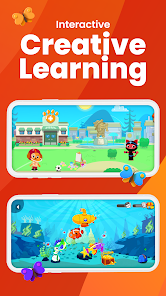Childhood is a tender season. The world is wide, new, and every sound, shape, and color holds the power to teach something new. Years ago, when we used to learn, learning began with chalkboards, picture books, and the occasional storytelling session at bedtime. Today, while those remain precious, parents also find themselves leaning on digital tools that carry lessons into small hands with ease. The balance between tradition and technology has never been more important, and it shapes how children first meet letters, numbers, and stories.

One such platform that has entered homes is Kiddopia. It doesn’t just line up letters and numbers; it wraps them in playful activities where children don’t feel they are studying at all. The appeal lies in blending imagination with structure. A child might be painting an underwater scene one moment and solving a puzzle the next—without realizing these tiny steps build memory, focus, and problem-solving skills. For parents, it offers a way to keep curiosity alive while ensuring that learning is never forced.
Stories, however, remain at the heart of growing up. And nothing nurtures reading better than programs like Reading Eggs. Built to guide children from the first recognition of sounds to confident, independent reading, it has become a bridge for many families. Instead of overwhelming a child with too much too soon, the approach is gradual, layered, and engaging. Parents often notice the joy when their child spells a word on their own for the first time—a small moment, yet powerful enough to mark the start of lifelong confidence.
Games also carry their own magic. With tools like ABC Kids Learning Games, learning letters transforms from rote memorization into play. A child might be chasing a cartoon character to match sounds or dragging letters into the right slots to form a word. These activities are designed to catch attention, but beneath the fun lies a rhythm: repetition, recognition, and retention. By blending entertainment with education, such games remove the fear children sometimes feel toward formal learning.
In another corner of this growing space is reading.com, a resource designed to offer both structure and guidance for families exploring the digital world of literacy. Parents often seek reassurance that what their child consumes online is meaningful, and platforms like this answer that call. They combine tested methods with modern delivery, giving families confidence that screen time can indeed nurture growth instead of simply entertaining.
Every parent carries the quiet worry—am I doing enough? The answer rarely lies in perfection but in presence. Sometimes it’s sitting down for five minutes after dinner to let your child show you what they learned on an app. Other times, it’s letting them stumble on a word and gently nudging them forward. What matters most is that these digital aids give parents and children shared ground where learning feels natural, joyful, and alive.
Looking back years from now, the specifics, whether a child learned their first word on an app or through a storybook, may blur. What will remain vivid are the smiles, the voices, the shared discoveries. Technology might play its role, but the heart of it all stays the same: children learning with joy, parents guiding with love, and small victories that carry into a lifetime of curiosity.
Leave a Reply